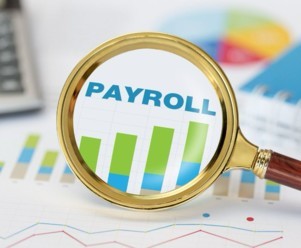How To Use Pay Stubs as Proof of Income for Mortgage
By Jaden Miller , May 14 2025

Are you applying for your first home or trying to upgrade to a new one? One of the most challenging parts of the process is having a verified proof of income for mortgage approvals.
For applications like this, a consistent record that shows your income statement is crucial. It will help determine if you are able to meet the financial expectations of your new home.
That is where a pay stub comes in! Here is a detailed breakdown on how to use pay stubs as an acceptable proof of income for mortgage applications.
- Why Do You Need Proof of Income for Mortgage Applications?
- What Lenders Do With Your Pay Stubs
- How Many Months of Pay Stubs Do You Need?
- Proof of Income Requirements
- Digital vs. Printed Pay Stubs: Which Is the Better Option?
- No Pay Stubs? Try Other Proof of Income Options
- Pay Stubs as Proof of Income for Mortgage: The Dos and Don'ts
- Final Thoughts
Why Do You Need Proof of Income for Mortgage Applications?
Have you ever wondered why lenders insist on proof of income for mortgage? It feels like an unnecessary inconvenience with too much paperwork. In reality, it is an essential procedure. What these documents show is that you have a reliable record of consistent income that can cover your mortgage payments.
Lenders need to verify your earnings, which will help them determine a safe borrowing limit for both parties. In most cases, lenders require proof of income for mortgage that dates as far back as 3 months.
An acceptable proof of income for home loans shows the details of your earnings across different pay periods. Your pay stubs show the details of your earnings. They also show your consistency in earnings, especially for freelancers and contractors.
What Lenders Do With Your Pay Stubs
Do you ever wonder what goes on with your documents after you have turned them in?
What details do lenders look for, and how do they verify the information on your pay stubs? Are there details that can either decrease or increase your chances of a successful mortgage loan application?
There is a lot that lenders can say about an application just by looking at the details on a pay stub. Here is some of the key information lenders look for and verify on your pay stubs:
-
Employer Details and Pay Period: These show who pays you and for which dates. This section of your pay stub helps lenders confirm you still work there.
-
Earnings Breakdown: Lenders examine your pay stub for regular hours, overtime pay, and any bonus earnings. Consistent earnings can strengthen your application and show financial reliability.
-
Deductions List: Taxes, benefits, and retirement contributions are important deductions on your pay stub. Lenders note your net pay because that's what actually hits your bank account.
-
Year-to-Date (YTD) Totals: This cumulative section shows total earnings for the year so far. It's a quick way to verify your annual income.
How Many Months of Pay Stubs Do You Need?
Multiple pay stubs help compare and confirm consistencies. If you're paid:
-
Biweekly: You should turn in 2–6 stubs
-
Monthly: Then 1–3 pay stubs would suffice
For contractors and freelancers who do not follow a monthly or weekly pay schedule, they get a custom requirement.
Proof of Income Requirements
Requesting a home loan without income proof would get your application turned down. You need to use the proper evidence of income for the mortgage document that aligns with your work level.
-
W-2 Employees: Your process is pretty straightforward. All you need for your home loan applications are your most recent pay stubs and your last two W-2s. Your proof of income for mortgage applications shows your current and year-to-date earnings.
-
Self-Employed and Freelancers: If you are in this category, then you likely do not have pay stubs—no need to worry. You can use your tax returns, either Schedule C or K-1, alongside your bank statements that show consistent deposits.
-
1099 Contractors: Very similar to W-2 employeess, except that you swap the W-2 with your 1099s. You pair them with your tax returns alongside any invoice records you have. If you still need a stub, a legitimate pay stub generator can help you generate one in minutes.
Digital vs. Printed Pay Stubs: Which Is the Better Option?
If you are wondering, "Do lenders accept digital pay stubs?" The answer is yes. Most do, as long as they're legible and of very high quality with the original formatting intact.
-
If you need a digital copy, download the PDF directly from your payroll portal. This way, the key details, original formatting, logos, and YTD totals are preserved.
-
If you have printed copies, you can scan your printed stub in high resolution and save it as a PDF. Alternatively, you can use a stub software to generate a digital version of your printed stub. Then you download it and share as a high-quality PDF.
As long as the details are visible with no inaccuracies or inconsistencies, digital is acceptable. Digital stubs are also easier to mail and share across multiple platforms.
No Pay Stubs? Try Other Proof of Income Options
In some cases, you may no longer have access to your pay stubs. It could be that they are missing, lost, old, or damaged. There are a few other options you can use to avoid applying for a home loan without income proof! Try any of these:
-
Employer Letter: This is perfect for new hires who have yet to receive stubs. The employment letter must include your role, start date, and salary. The letter must have the original company letterhead alongside a signature.
-
Tax Returns: Your tax returns are an easy alternative option. Most lenders prefer to have an official record of your earnings. Provide the federal tax returns for 1 to 2 years, depending on their requirements, and you are good to go.
-
Bank Statements: If you are self-employed, there are options that verify your bank deposit activity in place of stubs. You will need to submit up to three years of bank statements to show a consistent record of your bank activity.
-
1099 or Commission Statements: For individuals who receive Form 1099 or commission-based payments. Include these alongside your Form 1099-MISC or 1099-NEC to substantiate non-wage income.
-
Profit and Loss Statement: Self-employed borrowers can submit a year-to-date profit and loss statement. This should be ideally prepared or certified by a CPA to verify business earnings.
-
Retirement Account Distribution Notices: If you regularly withdraw from a pension or 401(k). Statements showing distribution amounts and frequency can count as proof of income.
-
Social Security or Disability Award Letters: For applicants receiving government benefits. An award letter confirming monthly Social Security or disability payments serves as valid proof of income.
-
Child Support or Alimony Documentation: This includes court orders or bank records. They should prove that you regularly provide child support or alimony payments. These demonstrate guaranteed income streams.
Pay Stubs as Proof of Income for Mortgage: The Dos and Don'ts
When you’re submitting pay stubs as proof of income for your mortgage application, it’s crucial to get it right the first time. Following a clear set of dos and don’ts can mean the difference between a smooth approval process and unnecessary delays or red flags.
Dos
Here are tips to keep in mind when applying for a home loan with pay stubs as your income proof.
-
Always organize your pay stubs in chronological order for easy review and verification.
-
If you work overtime or earn extra bonuses and benefits, include multiple stubs to total that additional income.
-
Check your data carefully, ensuring your data is accurate and the dates on your stubs align with your W-2 earnings.
-
For old, damaged, or missing stubs, use a stub generator to create professional ones.
-
Contractors and freelancers can create a custom stub for their income using a stub generator.
-
Always have backups of the original copy of your stubs, both on your drive and in your mail for easy access.
Don'ts
If you want to speed up your mortgage applications and avoid rejections, here are some mistakes to avoid:
-
Never send in an application for a home loan without income proof documents attached.
-
Avoid submitting one stub with your application, as this limits the verification process.
-
Make sure all scans are clear and legible. If you can't read it, neither can the lender.
-
Avoid inconsistent and obvious errors that would raise questions about the credibility of your stubs.
-
Make sure to always confirm the preferred format for mortgage applications with your lender.
Final Thoughts
If you can put all these in place, your documents will show lenders you're a reliable borrower. Gather the correct number of stubs, choose the right formats, and consider the dos and don'ts. This way, you'll submit a complete, accurate document that speeds approvals.
Need a pay stub that meets mortgage application criteria? Use our online generator to craft a precise, mortgage-ready stub. Complete with accurate income breakdowns and YTD totals—so you can apply confidently without missing a detail.Similar Articles
We’ve helped numerous individuals and businesses create professional documents! Create yours today!










